DisneyPlus - Artemis Fowl : what you should know about this movie
By Mulder, 10 june 2020
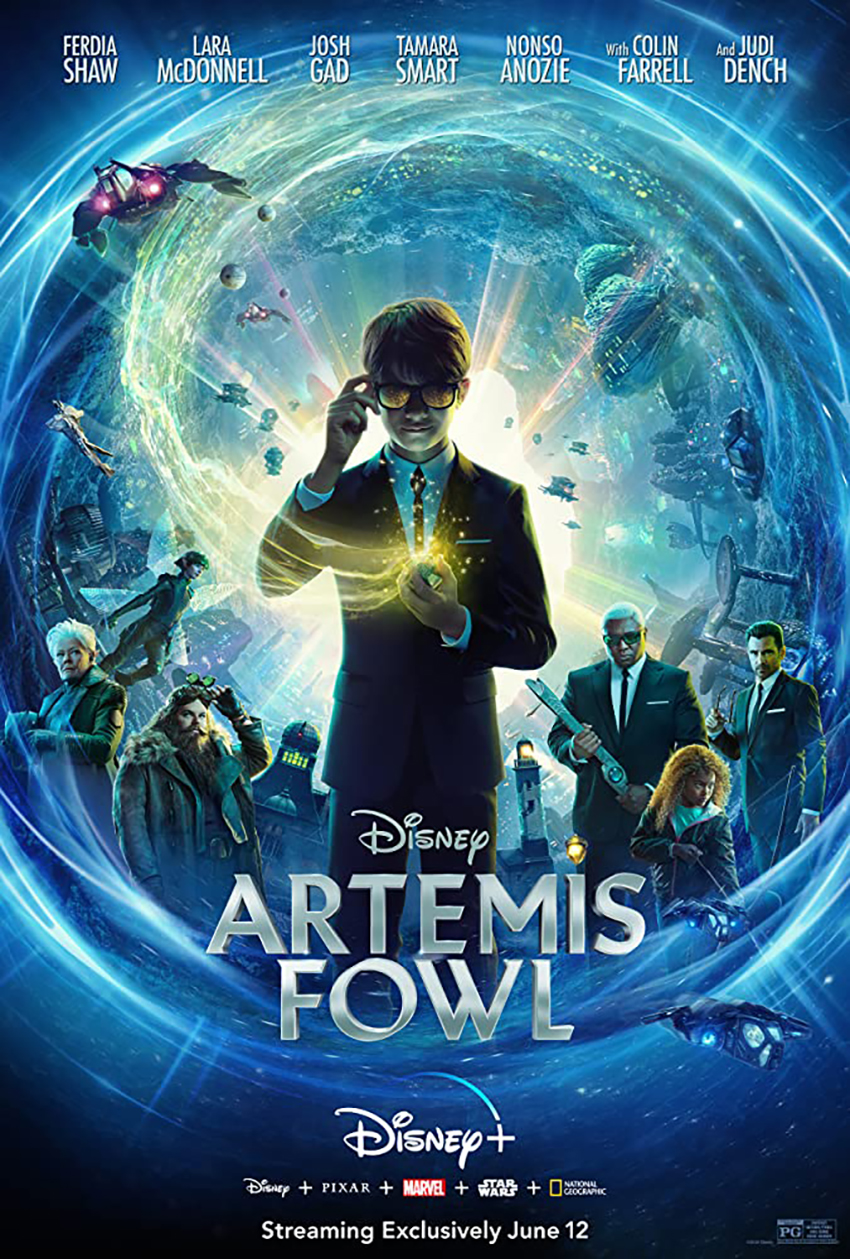
Disney’s “Artemis Fowl,” based on the beloved book by Eoin Colfer, is a breathtaking, fantastical adventure about 12-year-old devil-may-care genius Artemis Fowl II (Ferdia Shaw), a descendant of a long line of criminal masterminds. Artemis’ unimaginable brainpower is rivaled only by his willingness to fl out the rules.
When Artemis Fowl, Sr. (Colin Farrell), a trader of rare antiques and collectibles, disappears in a mysterious helicopter accident in the South China Seas, rumors abound that he had been stealing priceless artifacts. Even though his father was away a lot on business, Artemis Jr. just can’t believe he would be capable of such a thing. After all, this is the man with whom he has spent hours, listening to his amazing stories about the ancient civilization that exists beneath the surface of the Earth—an amazingly advanced world of fairies, goblins, trolls, dwarves and other magical beings.
Until now, Artemis never really considered these to be more than folk tales. But that all changes when he’s contacted by a mysterious hooded figure, who tells him she has kidnapped his father and he will die unless, within three days’ time, Artemis brings her the Aculos: the ultimate fairy device, which will give her a power beyond that of any other creature, magical or human. In order to locate and steal the highly-coveted Aculos, Artemis Jr. must infiltrate the secretive, reclusive Lower Elements, where these otherworldly creatures live. To accomplish this, he concocts an ingenious and highly dangerous plan—to kidnap and hold for ransom Holly Short (Lara McDonnell), a fierce member of the fairy special forces, LEPrecon.
It seems that Holly’s father, LEP official Beachwood Short, has disappeared and is presumed dead after being accused of stealing the Aculos from the fairies and pronounced a traitor. Since Beachwood was last seen in the vicinity of Fowl Manor, Artemis deduces that Holly will defy all fairy laws and travel there in order to fi nd out the truth, which she does.
Holding her prisoner in Fowl Manor, Artemis finds himself in a perilous war of wits with the all-powerful fairies, who pull out all the stops to retrieve her. Leading the charge is Commander Root (Judi Dench), the shrewd, cagey chief of the fairy reconnaissance forces. To penetrate the Manor and rescue Holly, Root enlists the help of crazy oversized dwarf Mulch Diggums (Josh Gad), a criminal with a penchant for breaking and entering. Desperate to rescue his father and restore his family’s standing, Artemis must employ every tool in his brilliant mind in order to outsmart the most powerful civilization in existence.
“Artemis Fowl” was directed by Kenneth Branagh and stars Ferdia Shaw, Lara McDonnell, Josh Gad, Tamara Smart, Nonso Anozie, with Colin Farrell and Judi Dench. Kenneth Branagh, p.g.a., and Judy Hoffl und, p.g.a., are the producers with Angus More Gordon and Ma???? hew Jenkins serving as executive producers. Conor McPherson and Hamish McColl wrote the screenplay, based on the novel by Eoin Colfer.
The journey of “Artemis Fowl” from the mind of author Eoin Colfer to the page, and now to the big screen, began with a simple photograph. “I came up with the idea a long, long time ago,” recalls Colfer, “when I saw a picture of my little brother Donal. When you make your first communion, you have to wear a full suit. I saw this photograph and I thought, ‘He looks like a 10-year-old Bond villain.’”
Says Colfer, “There’s a long tradition, going back centuries, of people telling stories about the fairies in Ireland. There’s a really strong belief in the fairy culture, and what I wanted to do was update that. In 2001, someone asked me what the book was like, so I said, ‘Die Hard,’ with fairies.” That idea of a young criminal mastermind in trademark suit and shades and his forays into a fairy underworld morphed into the phenomenon that is “Artemis Fowl”—with the eight-novel series selling over 25 million copies worldwide and now translated into over 40 different languages.

Five-time Academy Award–nominated actor/director/producer/writer Kenneth Branagh recalls, “I was introduced to ‘Artemis Fowl’ by my nephews, Will and Sam, who were reading the books on holiday.” Coincidentally, not long after, Branagh received a phone call. He explains, “When I got back maybe a week later, the Disney folks, who had been working on developing this story for sometime, asked me what my take on it would be. My goal was simply to introduce Artemis and his family and bring a whole new cinema audience into a world that is very exciting, different and full of surprises. I think the backbone is a terrific , breathless, exhilarating adventure in just the way great movies might aspire to. There’s tremendous energy.”
An Irishman himself, Branagh was immediately drawn to the tradiitional background of the material. The challenge was how to distill the sprawling fantasy world of “Artemis Fowl” into a script that appealed to new audiences, while keeping fans of the book happy. Branagh recalls, “I went to Eoin to speak about the way things looked, the way our fairy world appeared; its colors, its technology and the clothes that they wore. Whilst wanting to keep our objectivity, we also wanted to see if we could bring something useful to his story by being a separate set of eyes.” Colfer appreciated Branagh’s concern, and reassured him. He said, “I know every time a book is adapted the readers are worried, but I didn’t think they had any reason to be worried. Things have to change because it’s a movie.”
For Branagh, change is a good thing when it comes to adaptation: “When you have a great series of novels like the ‘Artemis Fowl’ books, I think that part of their success is that in the mind of every single reader they conjure up something slightly different. The film is going to be slightly different to what the fans imagined, but I reckon that, like them, we share a passionate devotion to the characters inside the story. “The goal is to give the audience the best, almost visceral time they can have,” adds Branagh. “Though audiences familiar with the book will see much that they love and recognize, there are still a few twists and turns to keep them on their toes in the story, some of which they might not expect.”
For audiences familiar with the books, the wholehearted support of author Eoin Colfer is the ultimate seal of approval. “I thought all their changes were totally justified, and for the beter.” Eoin’s response to all of it was exactly what we had hoped for: one of wonderment, one of joy, and one of absolute enthusiasm, the likes of which I hope every fan will share,” says producer Judy Hofflund. “While there will be new details and surprises along the way, everything you loved, everything that you continue to love, and everything that you know has been brought to life.”
Involved in the genesis of the project from the beginning, Eoin Colfer was a vital sounding board for Branagh when trying to adapt this sprawling story for the screen, ensuring that each decision felt as true to the book as could be. Says Colfer, “This book is nearly twenty years old, so it’s taken a long time. I didn’t really believe it would ever happen until I sat down with Kenneth Branagh.” It was especially fulfi lling for Branagh having Colfer visit the set. “It’s always a thrill when you have a living author,” says Branagh. “Having done so much Shakespeare, you do get frustrated you can’t give him a ring or invite him into the room! Eoin’s been nothing but supportive and warm and funny and very kind; we stood shoulder to shoulder. We were honored and humbled to have him on set. He wasn’t there all the time, but he was a guiding light. He was touched to see that we were also taking it very, very seriously. He’s a great storyteller.” Adds Branagh, “It’s a great privilege and profound honor to take these books that are so meaningful to so many people and try and bring them into cinema, where hopefully they meet a whole other range of fans.”
Finding the right actor to take on the role of young Artemis, which required a mature head on young shoulders to be able to portray such a complicated character, was daunting. Branagh says, “Artemis has to have so many qualities. He needs to be funny. He needs to be smart. He needs to be physically adroit. He’s very adventurous. There’s going to be a lot of action and stunt work in the picture, and he needed to have an emotional quality as well.” He adds, “Artemis Fowl is a character who loves life and is fascinated by it, so we’re driven through the movie by Artemis’ intelligence, by his curiosity, by his sense of humor and by his fearlessness. “We felt strongly that we should have someone from Ireland as Artemis,” says Branagh. “We saw twelve hundred young fellows who were around that eleven-, twelve-year-old mark.”
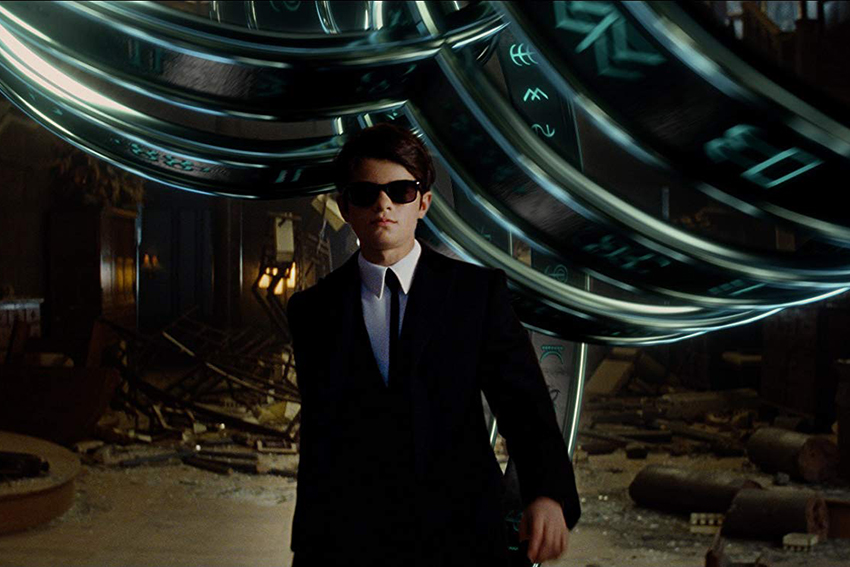
After much searching, the team found Ferdia Shaw from Kilkenny. Shaw stood out right away. Producer Judy Hoffl und explains, “It’s critical for the character of Artemis Fowl to project intelligence. With Ferdia, you saw that from the fi rst audition. He’s got such brightness in his eyes, such charisma.”“Ferdia has a dry, laconic sense of humor, and a twinkle in his eye,” says Branagh. “He’s a smart lad, very curious. He’s interested in everything. He’d also read all the ‘Artemis’ books and was well versed in the subject matter, and he was very open to being directed and to being exposed to this quite intensive experience for the first time.” On set, Ferdia continued to impress his director. “Ferdia was able to bring a freshness and a youthfulness that was very, very appealing,” says Branagh.
To portray 84-year-old fairy Holly Short, the filmmakers found the perfect fi t in 14-year-old Lara McDonnell, who’d recently appeared on stage in London in the title role of the celebrated musical “Matilda.” Producer Judy Hofflund recalls, “Lara came in for her first audition completely prepared; she was the one to beat, and nobody came close. She was Holly from the start.” Says Branagh, “Lara has a warmth and innate emotional intelligence, which means that, with all of the wonderful passion that she brings to Holly Short, she also has humor and she has kindness. Lara felt like she had very complementary qualities to Ferdia. Their relationship is absolutely the center of the film.” Explains McDonnell about her feisty, doggedly determined character, “Holly wants to do what’s right, no matter what the cost. She has to get in on the action.”
Colfer says, “Artemis and Holly’s meeting could not be any more acrimonious. I think he very quickly realizes, though he holds it inside for quite a while, that although a fairy, she is much more human than he expected. Whereas Artemis is cold and precise, she is very emotional. He needs Holly, because at a certain point in the story, Holly has to step in and become his protector.” The role didn’t just require acting prowess from McDonnell. “She had to do stunts, and so she was flying, twirling, twisting, jumping and fighting. Lara had terrific physical dexterity, which she put to good use,” says Branagh. Says McDonnell about Branagh, “He gave us direction as we’re doing it, so he’ll narrate over us, so we can react to it, which actually really helps. He was amazing when it came to envisioning everything coming together.” Josh Gad (“Frozen,” “Beauty and the Beast,” “Murder on the Orient Express”) remembers, “I got a call from Ken saying that he would love to off er me the role of [the oversized dwarf] Mulch Diggums. The truth is I hadn’t read the books, and so I immediately dived in and realized what an incredible world this was, and more specifically, what an amazing character Mulch was.” Gad continues, “He is a loner, out for himself in many ways. He is a thief, a kleptomaniac. He’s also an unbelievable miner by virtue of his background.”
Adds Branagh, “Mulch is a rogue, but he’s a lovable rogue, and in Josh Gad’s hands he’s about as lovable as you can get. Josh brings a very touching vulnerability and insecurity to the role. He wants to be smaller, what he considers a normal dwarf size. Because he’s a giant dwarf, people think that he’s rather separate, so there’s a certain loneliness there,” says Branagh.
The comedic nature of the role allowed Gad to capitalize on his improvisational background to create a sense of fun and surprise in scenes he shared with the rest of the cast. “Josh had us in stitches. It’s really hard to keep a straight face when he’s acting, because he ad-libs nearly everything,” says Shaw. Says Gad, “‘Artemis Fowl’ not only welcomes but in many cases requires more playfulness, more improvisation. Ken really pushed me in that direction. He’s really playful on the set.” Branagh says, “Having worked with Josh on ‘Murder on the Orient Express,’ I knew he has great improvisatory skill and wonderful comic timing. He has amazing energy. He’s a great, great gift to this movie.”
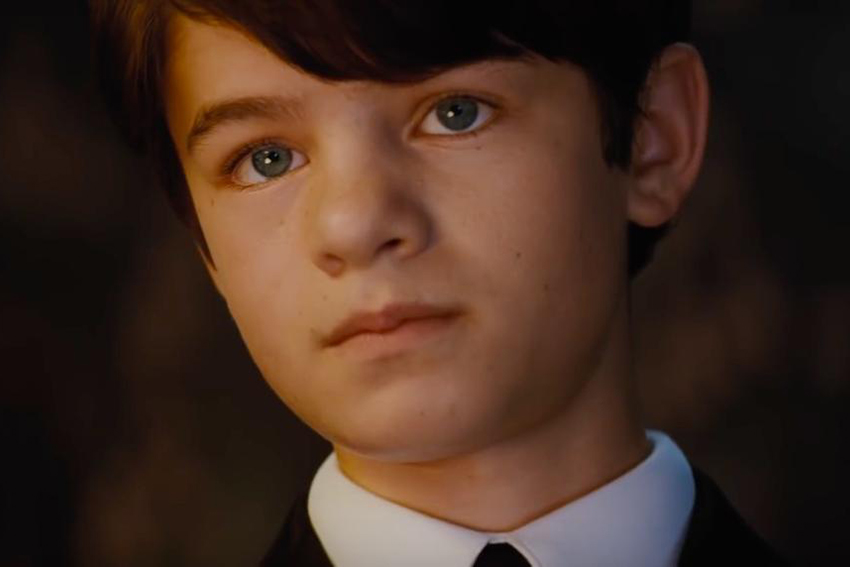
To play Artemis’ trusted ally and confidant, Domovoi “Dom” Butler, Branagh turned to someone he’d worked with numerous times in the theatre, and most recently in his film adaptation of “Cinderella,” British actor Nonso Anozie. “Nonso is a fantastically nuanced actor capable of playing comedy and drama. He’s also a physically impressive man, but with that size, height and intensity is a great intelligence and compassion,” says Branagh. “You couldn’t find anyone who combined better the qualities of paternal care for Artemis with that lethal killer instinct as well.” Says Anozie, “This is the fourth time I’ve worked with Ken. I think the inspiration of having someone with that much energy, that much drive and that much focus is it makes you bring your A-game. It makes you go the extra mile.”
Anozie describes his character’s relationship with Artemis as “many-faceted. He’s a father figure, he’s his protector, he’s a teacher. He’ll never replace his father, but I feel like he definitely plays that role at times.” Portraying Juliet Butler, Dom’s niece and eager security guard in training, is Tamara Smart, best known for her role of Enid Nightshade on the Netllix series “The Worst Witch.” “Tamara is such an infectiously enthusiastic performer. She had read the books and was particularly keen to tackle Juliet’s physicality,” says Branagh. “Juliet has that spark, that kind of provocative feisty quality that stands up to this great big uncle of hers, and certainly to Artemis Fowl. She’s her own girl, and so is Tamara.”
In the role of Artemis’ kidnapped father is Irish-born Colin Farrell, known for his roles in such films as “Saving Mr. Banks,” “Fantastic Beasts and Where to Find Them” and “The Lobster.” Farrell was enthusiastic about exploring the relationship between father and son.
Farrell says, “I thought the script was beautiful and moving. I play this patriarch, who is introducing his son to this world of magic and wonder under the guise of it being artifice, when in fact every story that he’s sharing has really taken place. My job is to try and guide Artemis, direct him, expose him through stories that I’ve shared with him all our lives of fairies and leprechauns and trolls and goblins and the history of Ireland and worlds that exist beyond what the human eye can see. He thinks that these are all just fantastical stories based in mythology, but it’s mythology that we find out actually exists.”
Until his character is kidnapped, he has been protective of his son. “He doesn’t want to share with him the full depth and the full responsibility and the danger and the weight of what it is to be a Fowl. He wants to keep his son a boy. He wants him to have a life. He wants him to have friends. Nobody in the lineage of Fowls has ever had any kind of normalcy in their lives at all, and he wishes that for his boy,” adds Farrell.
Playing Holly Short’s boss, Commander Root, is long time Branagh collaborator and Academy Award winner Dame Judi Dench. In the book, Commander Root was a male fairy, but Branagh felt more than comfortable with someone as revered as Dench taking on the role. “If you’re surprised, you can’t imagine how surprised I am,” says Dench. She continues, “I think it’s the tenth time I’ve worked with Ken. When we were working on ‘A Winter’s Tale,’ he came down to see me and he said, ‘Now how would you like it…’ and before he could get another word out, I said yes!”
Branagh says, “Judi brings her energy to bear upon this Napoleonesque, Irish curmudgeon. She looks like she’ll take no prisoners, and she found this swaggering walk and this Churchillian brogue in her voice that really gives you the sense of an absolute commander. It goes hand-in-hand with a very compassionate, intelligent, all-seeing character that is full of secrets as well. She brings such subtlety and fun and energy to the piece.” Recalls Dench, “Ken asked me to come over one day and meet Lara and Ferdia. We all made fairy cakes and put them in the oven while we talked. They’re really unaffected, un-precocious children, full of mischievousness.”
Lara McDonnell says, “It was a really incredible experience. I was so overwhelmed and excited, because I’ve never done anything big like this before and I get to work with her! It’s just the stuff of dreams.” “Judi Dench is amazing. Bloody amazing,” adds Shaw. “She was always very calm about everything.” “The best part of improvising is keeping Dame Judi Dench on her feet at all times, on her toes,” adds Josh Gad. “I’m acting alongside not only one of the greats but truly one of my idols.”

Rounding out the cast is Josh McGuire, who worked with Branagh on “Cinderella,” portraying the elf Briar Cudgeon, a power-hungry lieutenant gunning for Commander Root’s job; Nikesh Patel, who starred in the TV series “Bedlam,” “Indian Summers” and “Four Weddings and a Funeral,” as Foaly, a technologically-minded centaur with a messiah complex; and Adrian Scarborough (“1917,” “A Very English Scandal”) as The Goblin Chief.
To bring to life the worlds of “Artemis Fowl,” from the expansive Fowl Manor to the Lower Elements fairy world of Haven City, the filmmakers turned to production designer Jim Clay, who had recently teamed with Branagh on “Murder on the Orient Express.” For the ancestral home of the Fowl family, Clay realized that, to be able to shoot in the fast-fl owing style Branagh wanted, they would need to build a real set.
“Eoin’s original idea was a gothic mansion in Ireland. We wanted to make something a little bit softer, eclectic and with enough interesting spaces to accommodate all of the action,” explains Clay. Branagh explains, “Because we wanted the film to move so swiftly, we wanted to root it in something that we could control; something that was real, with the capacity to film outside and inside, and travel in one shot from one to the other.”
Using over 400 architectural drawings, Clay and his design team built Fowl Manor in five months, employing up to 300 construction workers during the peak of building activity. The house was fully functioning, with Wi-Fi, central heating and a working kitchen. The only thing it lacked were bathroom facilities. “Jim Clay has created an extraordinary Fowl Manor from the ground up, which sits atop a great hill, which becomes the walkway down to the beach and the Irish Sea beyond,” says Branagh. Clay says, “It was effectively a real house: a steel structure, clad in timber and plaster render, in which we accommodate a state-of-the-art sound stage in the roof space. Our DP, Haris Zambarloukos, could have his lighting rig in there, and Special Effects could have all of their pulleys and hoists and flying equipment.” To accommodate the action scenes in the house, particularly a sequence featuring a troll on the loose, the set had to break apart at the right sections and in the right way. “Because we had a lot of wire work, a lot of flying and a lot of swinging chandeliers, all this had to be rigged at the same time that we were building the house,” explains Clay. “We carefully worked out a whole sequence of choreography where we knew a particular column would be taken out, a staircase would collapse, and part of the library floor would break away as the troll put his head through it.”
The key to Clay’s design of the house was to ensure a seamless transition between all rooms and all spaces, inside and out, to allow the cameras to move with the speed at which Artemis Fowl’s mind works. The interior design of the house needed to reflect influences from the family’s travels throughout Europe from the eighteenth century to the present day. “Fowl Manor has the look of something that is a product of all the Fowls are interested in: architecture, science, biology, the arts, music. A house that has an ‘anything is possible’ ideology,” adds Branagh.
Set decorator Celia Bobak, who worked with Branagh on “Hamlet,” “Much Ado About Nothing,” “Henry V” and other films, was responsible for styling Artemis Jr.’s bedroom and the library, which doubled as Artemis’ father’s study. The library had a five-and-a-half-meter-high ceiling and floor-to-ceiling bookshelves, which contained approximately 12,000 books.
Recalls Colfer, “Nothing can prepare you for walking onto a set where the wonderful craftsmen have actually built what you invented in a tiny spare bedroom 20 years ago. It’s mind-blowing.” At the other end of the production design spectrum from Fowl Manor was Haven City, the Lower Elements feverdream fairy world where fairies, elves and otherworldly creatures live in technological harmony. “Haven City is where the last of the fairy families, except the demons, fled after the last battles with the humans, which supposedly took place one thousand years ago in Ireland,” explains Eoin Colfer. “Haven City has an organic feel to it; they have technology, but they have not abandoned Mother Earth. You’re not watching science fiction. This is alternate science that has been progressing parallel to our own, underneath our own, and I think the designer has really managed to capture that wonderfully.”
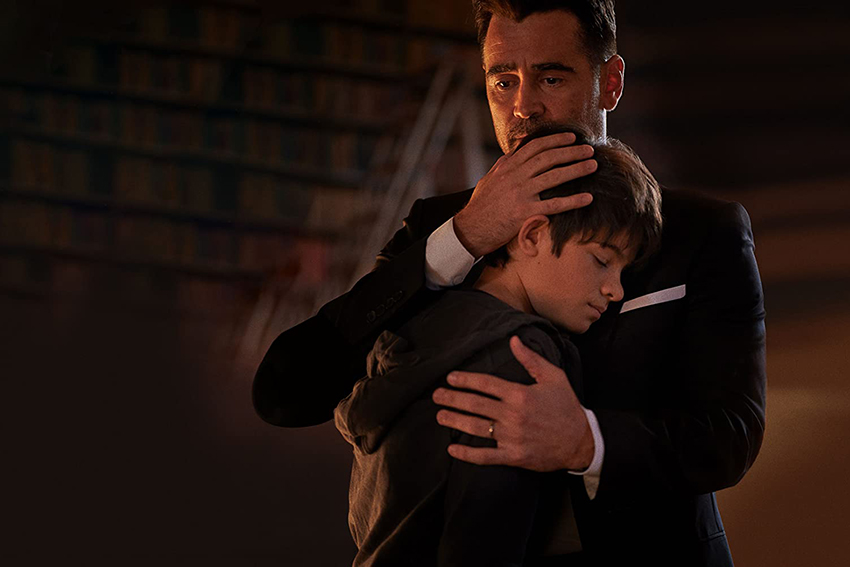
Once again, Branagh and the production team decided to build the world from the ground up, creating in it a new form of architecture they called “organic constructivism.”“Nobody knows exactly what a fairy world looks like, so it’s a blank canvas,” says supervising art director Dominic Masters. “We could stretch our imaginations to do what we like with it, not taking it too far away from the book but giving it our own flavor of how we felt it should be.”
Adds Clay, “We pictured the deep ocean, but without the water. We then perceived structures, which had their roots in organic structures and natural forms, which the fairies had then adapted for their means of living.” For Branagh and his director of photography, Haris Zambarloukos, how that new world was illuminated was key to creating that sense of a different world, of otherness. “We talked a lot about under-ocean worlds, coral and the quality of the colors and textures that you get in tropical oceans. They live in a kind of permanent twilight, which was a big challenge for Haris,” says Branagh. “Haris was trying to bring in the natural world with the lighting, bringing in elements of dappled water reflected onto the set, so the walls would be alive with light,” adds Masters.
To supplement the physical set of Haven City, Branagh turned to visual effects supervisor Charley Henley, with whom he had worked on “Cinderella.” Explains Branagh, “It was really good to have that history and to understand what you need to build, what you need to shoot and what makes the best possible fusion with the digitally created extension of that world. How we present the dark recesses of Howler’s Peak, the LEPrecon Headquarters themselves, the Control Room and the Comms Room for Foaly.”
The ultimate seal of approval came directly from the source. “The architecture of that city is absolutely stunning. It’s like nothing I have ever seen,” says Colfer. “It way exceeds my own imagination, so I couldn’t be more pleased about that.”
As you would expect in a film populated by goblins, fairies, trolls and more, the task facing the hair and makeup and costume design departments was a sizeable one. Kenneth Branagh was astounded at the breadth of creativity in the resulting outfits, prosthetics and hairstyles: “We had that ability to cope with scale and make every piece of costume tell a story. When we get down to Haven City, what people wear becomes a big way of understanding who they are. Sammy Differ, our costume designer, was completely un-thrown by the scale of things, creating fairy armies and nine different species of people down in Haven City. Our hair and make-up designer, Carol Hemming, managed to create an entire race of goblins with new skin color, ears and evil eyes.” The symbolism in the design of each of these otherworldly characters is rooted in the geography and folklore of Ireland. Branagh explains, “There’s connectivity between the kinds of markings you might see on standing stones or on exterior monuments, burial mounds and hills in Ireland, reflected in body paint and patterning on characters in the story.”
Although all the fairies appear to be wearing the same green outfit, Differ added some subtle marks of seniority to Root’s costume and an androgynous look inspired by a cross between David Lynch, David Bowie and the silver birch trees that grow near Longcross Studios. To Dench, this is as it should be, despite the initial character in the book being written as a male. “It should be androgynous, really; if you’re head of the LEPrecons, just masculine or just feminine probably wouldn’t do.” A vital element of Holly’s and Root’s look, as well as the rest of the LEPrecon team, were the ears. During the shoot, a total of over 100 different pairs of ears were sculpted by prosthetics for the LEPrecon team, ranging from small to large, old to young and pointy to droopy. As the prosthetic ears can only be worn once, the prosthetics department had to manufacture 4,000 pairs over the course of the shoot. The actors even auditioned with them, becoming quite used to puttng on their ears as part of their daily routine“Since the auditions, we’d always tried to put the ears on in some form, though nothing as intricately detailed or realistic as we had for the actual filming,” says Lara McDonnell.

For Mulch, Sammy Differ and Josh Gad discussed how they both felt the character should look, workshopping ideas. Explains Gad, “When I first came in, Sammy was doing a lot of layering, and it all felt like the right idea but we weren’t sold on the material. We saw this picture of an aviator with a jumpsuit that was in leather. We both looked at each other and thought that would be really interesting. It’s just like Mulch to be in all leather, because fairies hate leather. Wearing something that would be so offensive to Holly and others was something that was really intriguing to me.”
The question of how Foaly should appear was one of the most complex challenges for the production and required the costume, hair and make-up, CGI animation, visual effects and props departments to all work together to create the look of a character unlike any other in the film. To create the correct height for the VFX team to be able to add in the centaur-like features of Foaly later, Nikesh Patel had to wear some rather unusual items. “He had kangaroo boots on, which raised him up a little bit and gave him a little bit of a bounce,” says animation supervisor Eric Guaglione. “He also had a stick out of his back to show the full length of his body. It’s as much of a visual aid for us, as visual effects artists, to know what his size should be on stage. Nikesh has got a really great take on the character; he has a really wonderful physique to play the character, which really helped us defi ne the character of Foaly.” The hair and make-up team added a hairpiece to the character. “He has a long, fl owing mane, which is great, because I think that gave Foaly quite a high sense of self-regard,” says Patel.
Synopsis :
Artemis Fowl II (Ferdia Shaw), a young Irish criminal mastermind, kidnaps the fairy LEPrecon officer Captain Holly Short (Lara McDonnell) for ransom to fund the search for his missing father in order to restore the family fortune.
Artemis Fowl
Directed by Kenneth Branagh
Produced by Kenneth Branagh, Judy Hofflund
Screenplay by Conor McPherson, Hamish McColl
Based on Artemis Fowl by Eoin Colfer
Starring Ferdia Shaw, Lara McDonnell, Nonso Anozie, Tamara Smart, Hong Chau, Josh Gad, Judi Dench
Music by Patrick Doyle
Cinematography : Haris Zambarloukos
Edited by Matthew Tucker
Production company : Walt Disney Pictures, Tribeca Productions, Marzao films
Distributed by Disney+
Release date : June 12 2020 (United States, France)
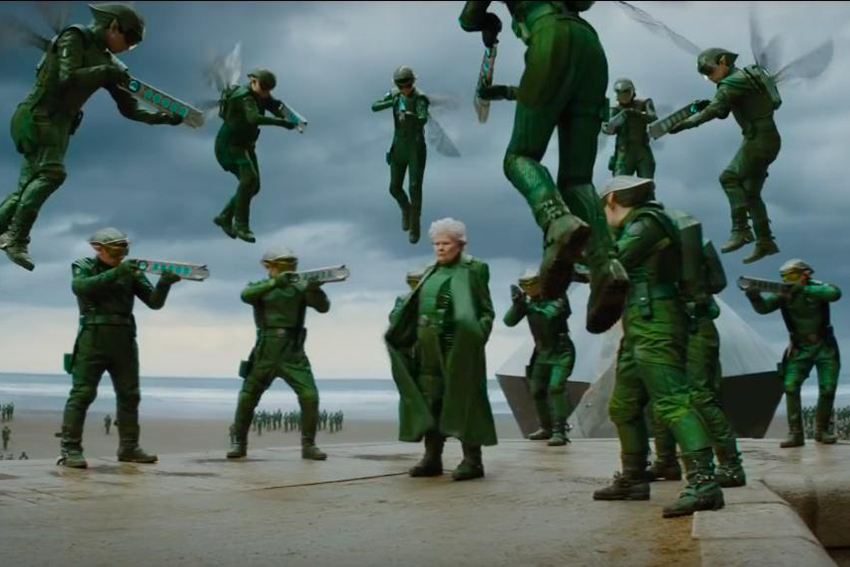
Photos : Copyright The Walt Disney Company
(Source : production notes)

